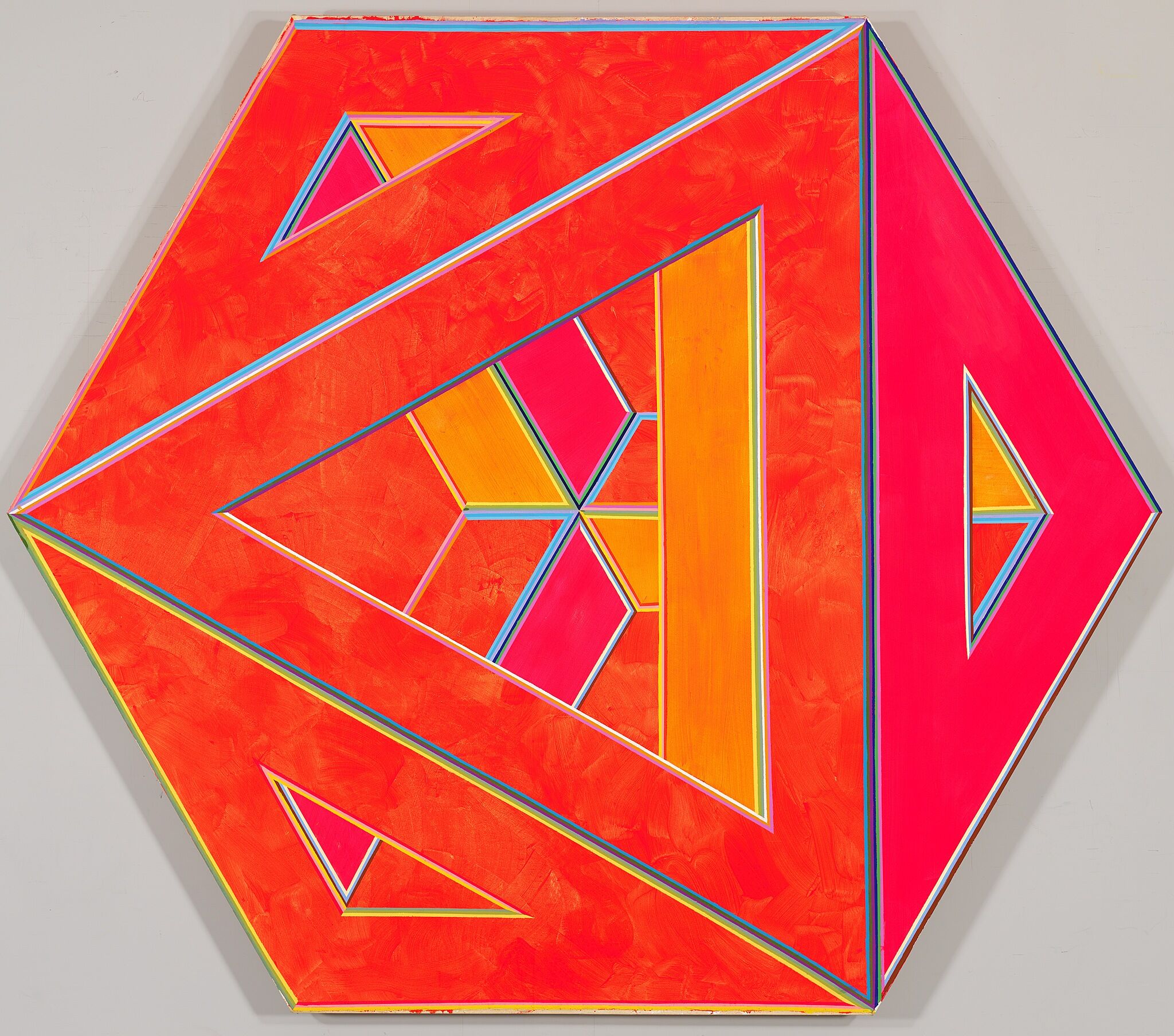Spilling Over: Painting Color in the 1960s | Art & Artists
Mar 29–Aug 18, 2019
Spilling Over: Painting Color in the 1960s | Art & Artists
Alvin Loving
12
Alvin Loving once described geometric shape as “a sort of mundane form that could be very, very dull unless a great deal was done with it.” For him, however, geometry ultimately became an arena in which to develop a dramatic color sensibility. Juxtaposing neon-bright pigments, he created the illusion that the painting’s forms recede or advance relative to one another. At the same time, his use of geometric forms emphasized the flat surface of the canvas, from which a tension emerges between real and imagined space.
In 1969, Loving became the first African American artist to have a solo exhibition at the Whitney Museum.

